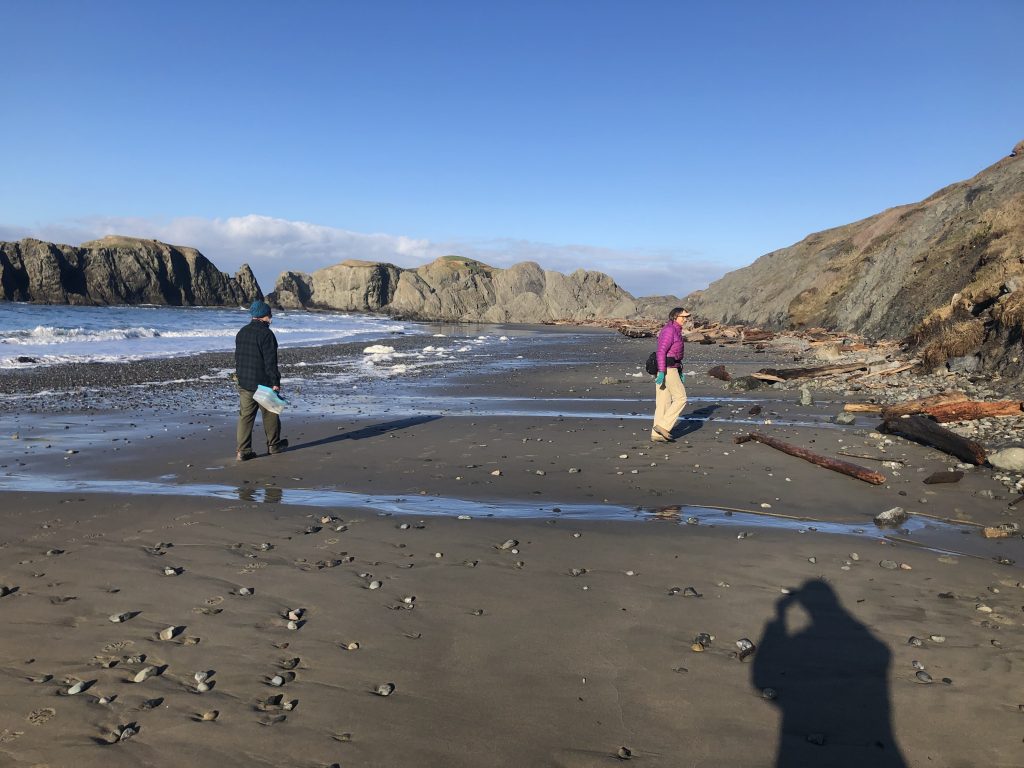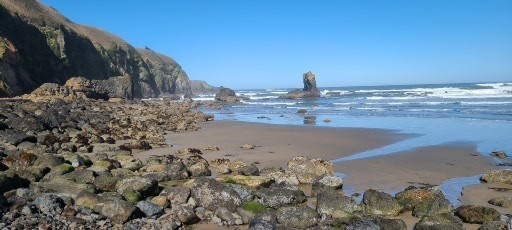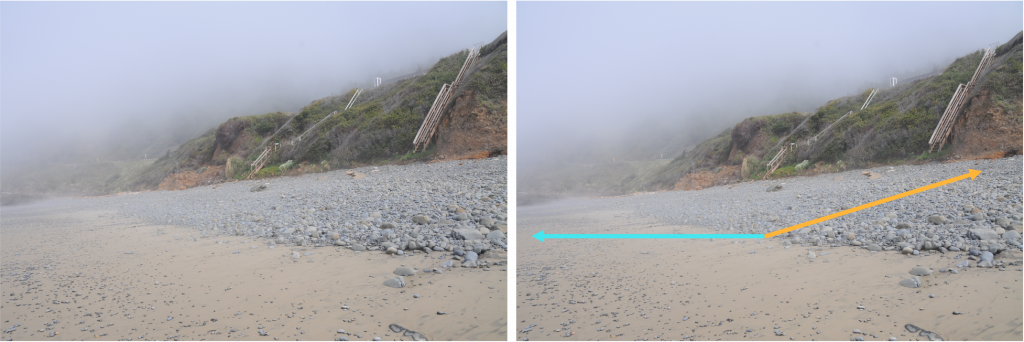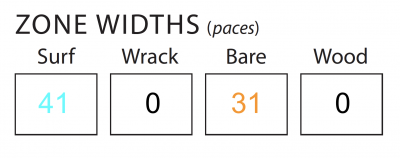What is the surf zone?
The surf zone is the beach area that gets exposed and covered by seawater in the daily tidal cycle. When exposed, the zone can be identified by its densely packed wet sand or wet cobbles.
The surf zone is widest at low tide, which happens twice each day. (This happens at a different time depending on the time of year and moon cycle – plan your surveys to take place on the outgoing tide using NOAA’s location-specific tide tables!)

On many outer coast beaches the surf zone is covered in sand, which is made from weathering and erosion of inland rocks, transported to the coast by rivers and streams or by the erosion of seaside cliffs. Sand is made up of particles that are not easily suspended in water; this is what makes it different from dirt (a much finer ‘grind’ that makes mud when mixed with water).
Cobble covered surf zones are frequently found at higher latitudes, where glacier melt has brought erosion-resistant rocks to the coast. There can be high wave energy on these beaches, which quickly washes tiny sand particles away.

COASSTers survey the beach in all seasons, and often find that winter storms change the beach dramatically – erosion is a common comment on COASST data sheets! Beach walkers find more sand and smaller stones during the calmer summer months as it is re-deposited from offshore banks.
If you want to learn more about sand composition and origination, check out these blue links!

How does COASST measure the surf zone?
The bottom of the surf zone is the water line. No need to get your feet wet – stop a pace before the lapping edge of waves! [If you encounter mudflats at low tide, refer to our mudflat blog for recommendations and safety tips.]
The top edge of the surf zone is where things can get murky. In the simplest case, the top of the surf zone is traced by a wrack zone, where flotsam—seaweed, small sticks, crab molts, Velella velella, etc. — are deposited on the outgoing tide. Everything below that first line of wrack is the surf zone.
What happens when there is no wrack zone? The surf zone ends when the sand changes from the densely packed wet sand to a softer, dry sand. It can be difficult to spot this line in the rain, but on a sunny day the high tide line can be easy to see!


What if you have cobbles AND sand? If the beach changes substrate composition from sand to cobbles, then this can help mark the line between surf and bare. The flat blue area and the ‘elevated’ orange area in the photos below are another clue: the sand marks the frequently-washed surf zone and the cobbles mark the frequently-dry bare zone.


What if you have continuous cobbles? Look for a line between wet and dry, or a slight change in ‘elevation’.

What about when everything is wet from rain? The rain may cause a blur between a wet line caused by the tide and wet rocks and sand caused by the weather.
With cobbles, look for small sea life growing on the rocks that are frequently underwater at high tide. Sea life might include algae, barnacles, mussels and limpets among other forms of life! (We love to see pictures of fun creatures you find. If we can make an identification we often feature them in What’s Washed In!)


If you have more questions about the surf zone, comment below or shoot us an email! We will keep this post updated with the latest photos and questions from COASSTers.
Happy surveys!
